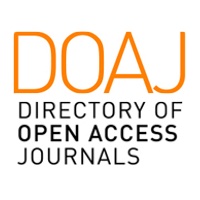DEVELOPMENT OF RECIPES AND PECULIARITIES OF FUNCTIONAL BAKERY PRODUCTS TECHNOLOGY
DOI:
https://doi.org/10.31395/2310-0478-2022-1-46-51Keywords:
bun, physical-chemical indicators, fructose, bakery, quality indicatorsAbstract
Introduction. The study of fructose bakery products formulation is due to the relevance of the spread of the problem with diabetes in Ukraine. To our opinion, overweight is one the main reasons of it. Purpose of the research. This necessitates weight control through a healthy and balanced diet, and a conscious choice of healthier foods. As bakery products remain one of the most important foods today, it is advisable to bake rich fermented goods with fructose to reduce their caloric intake and negative effect on the health of consumers. Methods. We considered the baking of the “Poltavska fructose bun” by replacing white crystalline sugar with fructose in crystalline form in the amount of 10 and 15% to the mass of flour. The obtained samples were compared with each other and with control sample by organoleptic and physical-chemical indicators of finished products quality, indices of finished dough quality (organoleptic and physical-chemical indicators, parameters of dough fermentation and proofing, baking). Results. According to organoleptic research of finished products quality all experimental samples by taste; smell, appearance, consistency and color complied with SSTU 4587:2006. The study of physical and chemical properties of finished products showed that the sample 1 has a close result to the basic requirements of TSU 15.8-05415042-002:2011. The results of physical and chemical indicators of the dough showed better results of the sample with 10% concentration of fructose, while organoleptic indicators of the dough and technological parameters of baking bun containing fructose (samples 1 and 2) almost do not differ from the values of the control sample. Conclusions. According to the results of these studies it was concluded that fructose concentration of 10% to the mass of flour is optimal for the manufacture of the “Poltavska fructose bun” in accordance with the basic requirements of TSU 15.8- 05415042-002:2011. Such amount of fructose corresponds to quality indicators on the taste of the finished product and is more optimal for use by diabetic patients. Increasing the fructose concentration to 15% to the mass of flour in the recipe for the “Poltavska fructose bun” leads to: a very sweet taste; increased porosity and moisture in the crumb, as well as a drying index.
References
Saeedi P., Petersohn I., Salpea P., Malanda B., Karuranga S., Unwin N., Colagiuri S., Guariguata L., Motala A. A., Ogurtsova K., Shaw J. E., Bright D., Williams R. Global and
regional diabetes prevalence estimates for 2019 and projections for 2030 and 2045: Results from the International Diabetes Federation Diabetes Atlas, 9th edition. Diabetes
research and clinical practice. 2019. Vol. 157. 107843. DOI:10.1016/j.diabres.2019.107843.
Власенко М. В., Семенюк І. В., Слободянюк Г. Г. Цукровий діабет і ожиріння – епідемія ХХІ століття: сучасний підхід до проблеми. Український терапевтичний
журнал. 2011. № 2. С. 50–55.
Споживання хліба в Україні. URL : https://rb.com.ua/uk/blog-uk/omnibus-uk/spozhivannja-hliba-v-ukraini(дата звернення: 4.12.2021 р.).
Лебеденко Т. Є. Науково-практичні засади стабілізації якості хлібобулочних виробів з використанням фіто-екстринів : автореф. дис. на здобуття наук. ступеня д-ра
техн. наук : спец. 05.18.01. Одеса, 2016. 23 с.
Дубцова Г. Н. Хлебобулочные изделия для здорового питания. Кондитерское и хлебопекарное производство. 2004. № 3. С. 4–5.
Marengo K. What are the most healthful types of bread? URL : https://www.medicalnewstoday.com/articles/325351 (дата звернення: 4.12.2021 р.).
14 листопада 2020 року – Всесвітній день боротьби з діабетом. URL : http://khocz.com.ua/14-listopada-2020-roku-vsesvitnij-den-borotbi-z-diabetom (дата звернення:
12.2021 р.).
Sivam A. S., Waterhouse D. S., Quek S., Perera C. O. Properties of bread dough with added fiber polysaccharides and phenolic antioxidants: A review. Journal of Food
Science. 2010. Vol. 75. R163–R174. DOI: 10.1111/j.1750-3841.2010.01815.x
Ibrahim U., Salleh R., Maqsood-ul-Haque S. Bread towards functional food: An overview. International Journal of Food Engineering. 2015. Vol. 1, Issue 1. P. 39–43.
DOI: 10.18178/ijfe.1.1.39-43.
Alqahtani N. K., Helal A., Alnemr T. M., Marquez O. Influence of tomato pomace inclusion on the chemical, physical and microbiological properties of stirred yoghurt.
International Journal of Dairy Science. 2020. Vol. 15. P. 152–160. DOI: 10.3923/ijds.2020.152.160.
Бараболя О. В., Калашник О. В., Мороз С. Е., Жемела Г. П., Юдічева О. П., Сергієнко О. В. Використаннянапівфабрикатів гарбуза для збагачення хліба пшеничного. Вісник Полтавської державної аграрної академії. 2018. № 4. С. 76–80. DOI: 10.31210/visnyk2018.04.11.
Жемела Г. П., Баган А. В., Бараболя О. В., Шакалій С. М., Чайка Т. О. Екологізація випікання пшеничногохліба з використанням хмелевих заквасок і спіруліни.
Вісник Полтавської державної аграрної академії. 2020. № 1. С. 100–106. DOI: 10.31210/visnyk2020.01.11.
Elkatry H. O., Alqahtani N. K., Ahmed A. R. Dough Behavior and Quality Characteristics of Novel Bread Fortified with Some Medicinal Herbs. American Journal of Food Technology. 2021. Vol. 16. P. 9–17. DOI: 10.3923/ajft.2021.9.17.
Дробот В. І., Бондаренко Ю. В., Місечко Н. О., Седих О. Л., Білик О. А. Хлібобулочні вироби для хворих на цукровий діабет, збагачені фізіологічно-функціональними інгредієнтами. Хранение и переработка зерна. 2017. № 5. С. 57–61.
ДСТУ 4587:2006 Вироби булочні. Загальні технічні умови. [Чинний від 2007-07-01]. Київ : Держспоживстандарт України, 2006. 12 с.
Дробот В. І. Довідник з технології хлібопекарського виробництва : навч. посіб. / 2-е вид., перероб. і допов. Київ : «ПрофКнига», 2019. 580 с.
Лозова Т. М. Наукові основи формування споживних властивостей і зберігання якості борошняних кондитерських виробів : монографія / відп. ред. І. В. Сирохман.
Львів : ЛКУ, 2009. 456 с.
Буяльська Н. П., Гуменюк О. Л., Денисова Н. М., Челябієва В. М. Підвищення харчової цінності хлібобулочних і борошняних кондитерських виробів : монографія. Чернігів : ЧНТУ, 2020. 122 с.








